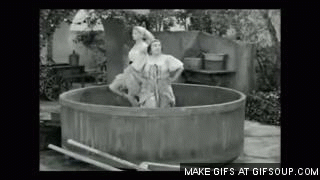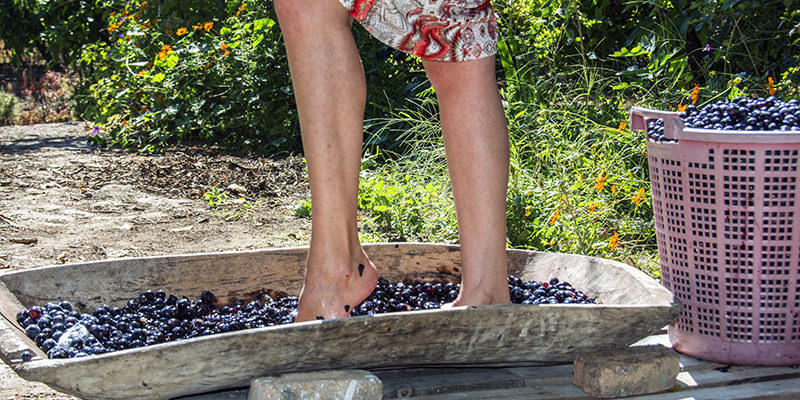Foot treading is anything but the homey, silly dance most drinkers imagine when they think of traditional grape-stomping rituals. In reality, foot treading is far more work than modern methods for crushing grapes, though it starts the winemaking process off as efficiently as more advanced and modern methods.
The crush literally gets a grape’s juices flowing and is the first step in the process that turns fresh, delicate fruit into delicious, shelf-stable wine. As grape skins are broken — by feet or other methods — their sweet juices come into contact with grape skins, absorbing the flavor, colors, and tannins crucial for fine wines. Meanwhile, juices are also exposed to yeasts, either in the air or added by winemakers, that induce fermentation. For reds, rosés, and orange wines, this skin contact time is essential, but for whites and most bubbly it’s avoided at all costs, which makes proper crushing vital.
Through the ages, three methods have dominated the crushing process for any style of wine, and they range in complexity (and price) from bare feet to elaborate, computer-controlled machines. Though they might seem interchangeable, crushing and pressing grapes are two different processes. Crushing simply breaks grape berries, allowing the juice, pulp, and seeds to mingle with the skins and stems of the grapes. Pressing, on the other hand, is the process that separates the grape juice from the fiber and other solids that make up a berry. Sometimes, crushing and pressing are done at the same time, though they can be separated by a few hours or days depending on the style of wine being made.
First, winemakers decide whether or not to crush grapes “whole cluster,” wine speak for the stems intact. In red and orange wines, stems add extra tannin and structure to developing wines. For delicate white wines and some light reds, these grippy tannins are undesirable, so winemakers separate the stems and berries before crushing.

The simplest and most ancient crushing strategy is the whole-cluster version known as foot treading. Most popular today across Portugal, this process literally involves crushing the grapes with bare feet. Often, three or four workers will stomp the grapes for several hours in a dance that traditionally came with sides of brandy and roasted chestnuts. From experience (minus the brandy), I can tell you it really does take that long — grapes are far more dense than they seem and foot treading is a solid workout. As the grape juice and solids are mixed thoroughly by marching humans, flavors and chemical compounds are distributed through the juice. Worried about toe jam in your juice? No need, since most wineries require the stomping team to wash their feet in bacteria-killing sulfur solutions before jumping into the bins or stone lagares used for the crush.
Faster and more popular than foot treading is the use of crusher-destemmer machines. These metal contraptions separate grape berries from their tough stems and gently break open their skins. In most wineries, grapes are tumbled from truck beds or bins into large metal hoppers and are then funneled into the spiny destemmer, which rotates to remove the stems while letting berries fall into a separate machine where they are lightly crushed. Then, the grapes are either transferred to tanks to begin fermentation with the skins or moved directly into a press.
In some cases, a wine press doubles as the crusher, and grapes don’t spend time marinating with the skins at all before beginning to ferment. This process is used for the most delicate white wines since the juice runs straight away from the pulp and seeds, retaining pure, varietal characteristics. Today, most wineries use a pneumatic press to crush their grapes. These presses contain a large, plastic balloon that gradually inflates to gently break the grape skins. Juice slowly drains into a pan beneath the press, which rotates to get every drop of juice out. Over the course of several hours, the press turns and inflates again and again, steadily removing every drop of juice and leaving winemakers with a pile of dry skins and seeds.
After crush, the focus shifts from farm and harvest logistics to chemistry labs as winemakers monitor and test the fermentations that lead to award-winning wines. Whether they’re trading Zumba for foot treading or carefully watching the presses, right now winemakers are crushing it.

